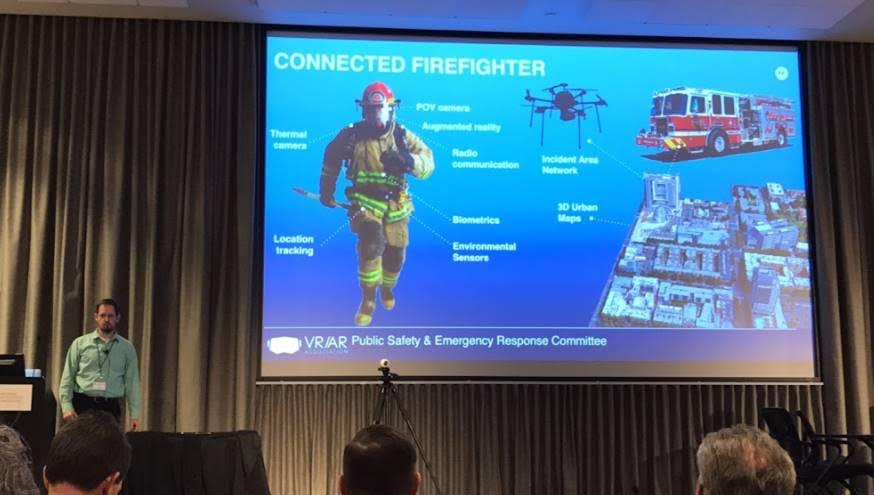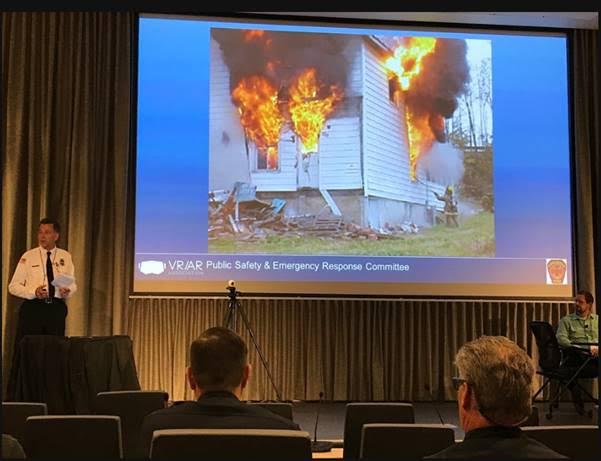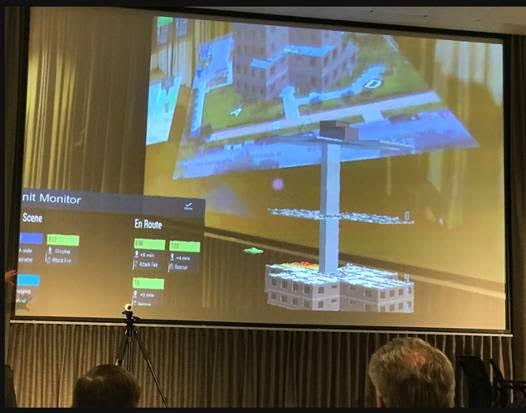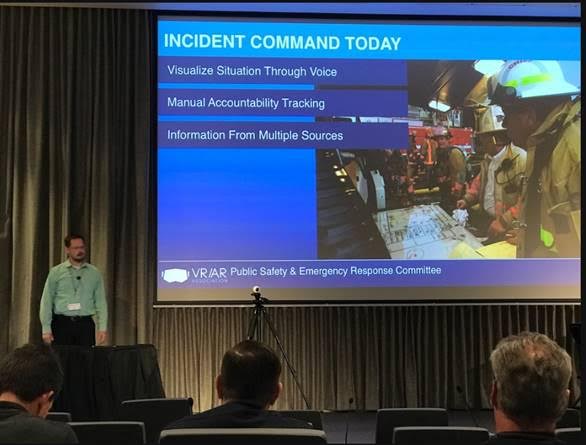Original article posted on RoadtoVR
Following the news of a $500 million plaintiff award in the ZeniMax v. Oculus lawsuit, a detailed breakdown of the verdict reveals the jury’s specific findings, and who is responsible to pay for the damages.
Guest Article by Matt Hooper & Brian Sommer, IME Law
Matt is a Partner at IME Law, where he represents clients in the immersive media, entertainment and technology industries. He represents several of the leading VR content creation and software companies in the United States. He also serves as Co-Chair of the VRARA Entertainment Committee. You can follow Matt on Twitter @mhooplaw.
Brian is an interactive media and entertainment attorney at IME Law, where he focuses his practice on the intersection of traditional entertainment and immersive media. He also serves as Co-Chair of the VRARA Licensing Committee. You can follow Brian on Twitter @arvrlaw.
Breaking Down the Jury Verdict in ZeniMax v. Oculus
After only a few days of deliberating, the Oculus jury returned a verdict in favor of Plaintiffs ZeniMax and id Software totaling $500 million. ZeniMax was awarded money damages against Oculus, founder Palmer Luckey, (former CEO) Brendan Iribe and CTO John Carmack, but parent-company Facebook escaped monetary liability (although Oculus is a subsidiary of Facebook).
Before the jurors started deliberating, Judge Ed Kinkeade provided them with nearly 90-pages of jury instructions. The jury instructions read like a missive and questionnaire, detailing the laws the jury must apply and includes spaces for the jury to fill in their award decisions (each count has to be reached unanimously, and there were nine jurors). Since the jury is a cross-section of people with different levels of education and experience, the judge wrote the jury instructions in easily digestible format, being careful to not distort important legal significances and nuances. The Oculus jury was comprised of six women and three men, with a wide-array of diverse backgrounds.╫
The following summarizes each count in the jury instructions and how the jury ruled:
Common Law Misappropriation of Trade Secrets
Defendants: Oculus, Facebook, Luckey, Iribe and Carmack
Jury Award (Defendants’ Liability to Plaintiffs): $0
The plaintiffs alleged that the defendants misappropriated their trade secrets. The court explained that a trade secret is defined as “a formula, pattern, device or compilation of information used in a business which gives its owner an opportunity to obtain an advantage over his competitors who do not know or use it.” Plaintiffs asserted that their trade secrets included the following technologies: (1) distortion correction technology; (2) chromatic aberration correction method; (3) gravity orientation and sensor drift correction technology; (4) head and neck modeling technology; (5) HMD view bypass technology; (6) predictive tracking technology; and (7) time warping methodology.
To prevail on their claim for misappropriation of trade secrets, the plaintiffs needed to prove that: (1) a trade secret existed; (2) the defendants acquired the trade secret through breach of a confidential relationship or by improper means; (3) the defendants made commercial use of the trade secret in their business without authorization; and (4) the plaintiffs suffered damages as a result.
The jury found that ZeniMax failed to prove by a preponderance of evidence that any of the defendants misappropriated the trade secrets claimed by the plaintiffs. With respect to most civil claims, a plaintiff need only prove each element of a claim by a “preponderance of the evidence.” To establish an element by a preponderance of the evidence means to prove that “something is more likely so than not so.”╫ This is a significantly lower burden than the “beyond a reasonable doubt” standard which is used for criminal cases.
Because the jury found that ZeniMax failed to prove that any of the defendants misappropriated its trade secrets, the jury did not award any damages to ZeniMax for this claim.
Copyright Infringement
Against Defendants: Oculus, Facebook, Luckey, Iribe and Carmack
Jury Award: $50,000,000 in actual damages against Oculus
All the defendants were alleged to have copied ZeniMax or id Software’s computer programs code in violation of their copyrights. There is no copyright protection in a computer program for ideas, program logic, algorithms, systems, methods, concepts or layouts; only original “expressions” of work embodied in a computer program are eligible for copyright protection. For example, literal elements such as source code and non-literal elements such as program architecture, structure, sequence and organization, operation modules and computer-user interface may enjoy copyright protection. A computer program can be original even if it incorporates elements that are not original to the author. Accordingly, computer code copyright infringement cases require filtering and separating uncopyrightable elements of the computer program from the protected parts, an expensive and complicated analysis usually involving expert witnesses.
The plaintiffs were granted the $50 million dollar copyright infringement against Oculus because the jury concluded the following: (1) the computer programs in question were copyrightable; (2) ZeniMax or id Software own the copyrights; and (3) Oculus copied the copyright-protected computer programs owned by ZeniMax or id Software.
Elements (1) and (2) were relatively easy issues for the jury to reach, because the plaintiffs registered their computer programs with the Copyright Office. Proving the third element was the complicated, contested part of the trial.
To prove the third element and find Oculus liable, the jury had to answer yes to both of the following questions: (1) did Oculus copy computer programs; and (2) if there was copying, was the copying “substantially similar” to plaintiffs’ copyrighted computer programs.
The Oculus court used the Abstraction-Filtration-Comparison Test (“AFC Test”) to analyze whether the non-literal elements of Oculus computer programs were substantially similar to ZeniMax or id Software copyright-protected computer programs. Essentially, the AFC Test involved breaking down each computer program into constituent parts, examining each of the constituent parts, sifting out non-protectable code and then comparing Oculus and plaintiffs’ programs to determine whether the copyright-protectable elements were substantially similar to warrant a claim for infringement.
Plaintiffs used Dr. David Dobkin, Professor of Computer Science at Princeton, to shepherd jurors through the AFC Test. At the end of his testimony, Dr. Dobkin concluded he is “absolutely certain Oculus copied from ZeniMax code,” and the jury agreed.╫ Prior to the jury verdict, Oculus contended in its January 30, 2017 Motion for Judgment as a Matter of Law that the AFC Test is “invalid and unconstitutional.” This issue may play a central role in expected appeals.
Breach of Contract
Defendants: Oculus and Luckey
Jury Award: $0 Luckey / $200,000,000 Oculus
The plaintiffs alleged that Luckey and Oculus had a contract in the form of a non-disclosure agreement (“NDA”) with the plaintiffs, and that Luckey and Oculus breached the NDA. Oculus disputed that it was a party to the NDA, as Luckey signed it in his individual capacity before Oculus was formed. The court explained in the jury instructions that Oculus would be bound to the NDA if the jury finds: (1) Oculus is a “mere continuation” of Luckey’s prior business (because a business that takes over assets from a prior business (even a sole proprietor) may have to assume the prior business’ obligations); and (2) Oculus manifested acceptance of the NDA through its conduct; or (3) Luckey assigned his obligations under the NDA to Oculus (a principle called “quasi-estoppel” provides that a party cannot maintain a position inconsistent with a position to which it previously acquiesced, or for which it previously accepted a benefit).
Luckey and Oculus raised the doctrine of laches in their defense. Laches is an affirmative defense, which means that Luckey and Oculus had to prove by a preponderance of the evidence that: (1) there was a delay by the plaintiff in asserting a right or claim; (2) the delay was not excusable; and (3) there was undue prejudice to the party against whom the claim is asserted (the prejudice can be due to a loss of evidence or the defendant having changed its position in a way that would not have occurred had the plaintiff not delayed).
The jury found that Luckey breached the NDA, but it decided that the doctrine of laches barred the plaintiffs’ breach of contract claim against Luckey. The jury also found that Oculus was a party to the NDA on all three bases listed above: (1) mere continuation; (2) manifested acceptance and (3) quasi-estoppel (one would have been enough). Similarly, the jury found that Oculus breached the NDA. The jury provided an award of $200,000,000.00 in damages for Oculus’ breach of the NDA.
Tortious Interference With Contract
Defendants: Facebook
Jury Award: $0
The plaintiffs alleged that Facebook tortuously interfered with the NDA. In order to establish a tortious interference with contract claim, the plaintiffs had to establish that: (1) the NDA existed between plaintiffs and Luckey/Oculus; (2) Facebook willfully and intentionally interfered with the NDA; (3) the act of interference was a proximate cause of damage to plaintiffs; and (4) the plaintiffs suffered actual damage or loss as a result.
The jury found that Facebook did not tortuously interfere with the NDA, so no damages were awarded. The jury does not provide commentary on which of the four elements plaintiffs failed to prove, so the strength or weakness of this claim is unknown.
Unfair Competition
Defendants: Oculus and Facebook
Jury Award: $0
The plaintiffs alleged that Oculus and Facebook engaged in “unfair competition” with respect to the plaintiffs’ contracts, copyrights, trademarks and trade secrets. “Unfair competition” is a form of unlawful business injury arising out of business conduct which is contrary to honest business practice in industrial or commercial matters. It requires that a plaintiff prove that the defendant committed an illegal act that interfered with the plaintiff’s business.
For the purpose of the case, the potential “illegal act” by Oculus could have been any of the following: (1) misappropriation of trade secrets; (2) copyright infringement; (3) trademark infringement; or (4) breach of contract. The potential “illegal act” by Facebook could have been any of the following: (1) misappropriation of trade secrets; (2) copyright infringement; or (3) tortious interference with the NDA.
The jury found that Facebook and Oculus did not engage in unfair competition, so no damages were awarded for this claim.
Conversion
Defendants: Carmack only
Jury Award: $N/A
The plaintiffs alleged that Carmack “converted” the plaintiffs’ property. The term “converted” means that Carmack wrongfully exercised control over the plaintiffs’ property. To prevail on their claim, the plaintiffs needed to prove that: (1) the plaintiffs owned or had legal possession of (or were entitled to possession of) the property; (2) Carmack, unlawfully and without authorization, assumed and exercised dominion and control over the property to the exclusion of, or inconsistent with, the plaintiffs’ rights; (3) the plaintiffs demanded return of the property; and (4) Carmack refused to return the property.
Carmack raised two defenses against the conversion claim. First, he claimed that the statute of limitations barred the claim because the applicable statute of limitations was two years, and the plaintiffs waited longer than that to file its conversion claim. Carmack also claimed the doctrine of laches as a defense (see “Breach of Contract,” above, for the elements of that defense).
The jury found that Carmack converted plaintiffs’ property by taking ZeniMax documents and RAGE (2011) code. The jury found that the statute of limitations and laches defenses did not bar the claim. However, no specific damages were listed as awarded despite Carmack being found liable for conversion.
Trademark Infringement and False Designation
Defendants: Oculus, Iribe, and Luckey
Jury Award: $50,000,000 Oculus / $150,000,000 Iribe / $50,000,000 Luckey
The plaintiffs alleged that Oculus, Luckey, and Iribe infringed the plaintiffs’ trademarks. To prevail on their claim, the plaintiffs needed to prove that: (1) ZeniMax owned legally protectable trademarks; and (2) Oculus, Luckey and Iribe used one or more of ZeniMax’s trademarks without its consent, in connection with the offer of products in a manner that was likely to cause confusion as to the source, affiliation, or sponsorship of the products. A likelihood of confusion means a probability of confusion (not just a mere possibility of confusion), and that a reasonably prudent purchaser or user is likely to be confused as to the source of the product in question.
The plaintiffs also brought a claim for false designation against Oculus, Luckey and Iribe. The court explained to the jury that “any person who makes commercial use of any word, term, name, or symbol, or combination thereof that is likely to cause confusion as to that person’s affiliation, connection, or association with another person, or that misrepresents in advertising the nature, characteristics, quality, or geographic origin of that person’s goods or services, is liable to any person who is or is likely to be damaged by the false designation of origin.”
Oculus, Luckey and Iribe raised multiple defenses. They alleged that: (1) they had an express or implied license to use the trademarks; (2) ZeniMax acquiesced to the use of its trademarks; (3) they used it to accurately describe their goods and services (“nominative fair use”); and (4) the doctrine of laches prohibited the claim.
The jury found that Oculus and Iribe intentionally and knowingly infringed ZeniMax’s trademarks, but found that Luckey did not. The jury found that the defenses of license, acquiescence, nominal fair use and laches did not serve as a viable defense. The jury found that the actual damages that the plaintiffs suffered as a result of the trademark infringement was $0.
The jury found that Oculus, Luckey and Iribe are all liable for false designation, in which they intentionally and knowingly engaged. The jury again found that none of the foregoing defenses bar the plaintiffs’ claim. The jury found that actual damages that the plaintiffs suffered as a result of the false designation were as follows: $50,000,000 Oculus; $50,000,000 Luckey; and $150,000,000 Iribe.
Within hours of the court announcing the verdict, Oculus released a statement vowing to appeal. Meanwhile, ZeniMax is mulling over seeking injunctive relief to temporarily halt the sale of Oculus Rift headsets.╫
Iribe is reported to have a net worth valued around $2 billion, while Luckey’s net worth is reported around $700 million, so they are armed with enough cash to continue litigating (or perhaps their defense fees are paid by contract with Oculus).
Expect more motions to get filed in the trial court, including ZeniMax seeking millions in attorney fees. Although the verdict has been announced, it’s not likely the end of the case, but actually a second beginning. Given the high stakes of this case, expect a number of post-verdict motions and appeals, resulting in the case dragging on indefinitely. The appellate process can take years. Often, parties will settle during the appellate process for an array of reasons, ranging from business concerns to legal uncertainty to resource drain. This matter is far from over.
















